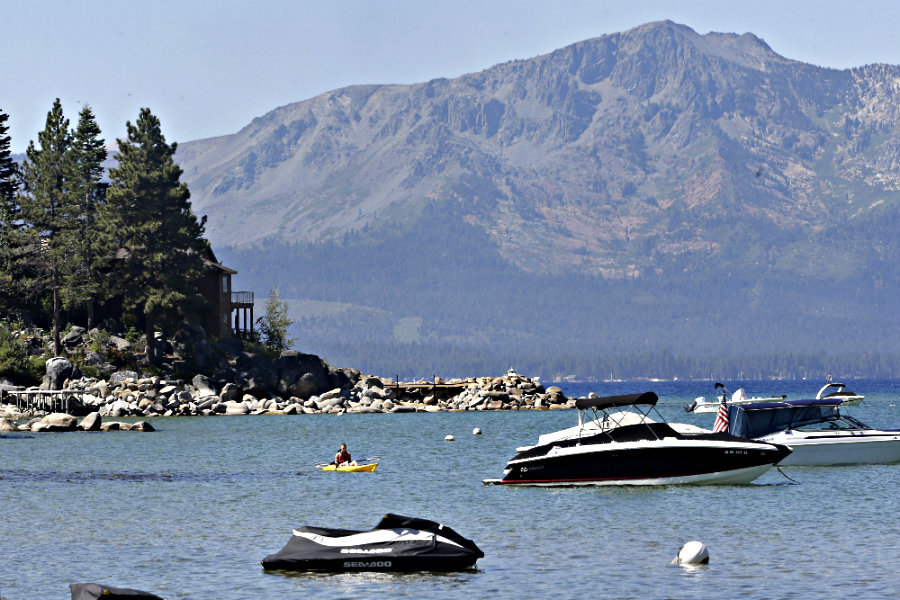Why is Lake Tahoe getting warmer so quickly?
Loading...
Swimmers, look out! California’s Lake Tahoe may be getting warmer, but that isn’t necessarily a good thing for those looking to use the lake for recreation.
Lake Tahoe is warming rapidly – at about 15 times its historic average, according to a new State of the Lake report, a speed that threatens the lake’s famous clarity by changing many aspects of the lake’s ecology.
“The occurrence of rising air temperatures at Lake Tahoe has been known about for many years now, and with it the warming of the lake,” said Geoffrey Schladow, of Tahoe Environmental Research Center (TERC) at the University of California Davis, in a press release. “What is different this year is that we are seeing more aspects of the lake’s internal physics changing, and that is bound to alter the ecology.”
Scientists say that what is happening at Lake Tahoe is not just alarming for those who love and use the lake for recreation, but it is also alarming for anybody concerned about world climate change and the impact that changing temperatures could have on the beauty of natural resources.
“While Lake Tahoe is unique, the forces and processes that shape it are the same as those acting in most natural ecosystems,” wrote TERC in the report. “As such, Lake Tahoe is an indicator for other systems both in the western U.S. and worldwide.”
When scientists first started keeping records on Lake Tahoe’s water temperature in 1970, the lake averaged 50.3 degrees Fahrenheit, year round. In 2015, the lake water averaged 53.3 degrees. While the increase may seem insignificant, much of the warming has occurred in the past decade and a half, a sign that concerns scientists.
Increasing water temperatures are likely tied to changing air temperatures – the northwest shore of the lake has seen a daily air temperature increase of 4.3 degrees F, on average, since 1916.
Historically, different temperature waters mingle in the lake’s deeps during the winter, “mixing” the water and leading to a clearer view, according to the Associated Press. But the lake failed to mix at its fullest depth this year, which researchers attribute to warmer inflows of water.
As a result, water clarity fell to 73.1 feet last year, a nearly five-foot clarity decrease over previous years.
Water “mixing” is not the only the factor that can contribute to the lake’s clarity. Fertilizer use in nearby areas and runoff can also muddy the waters. Efforts over the past couple decades to reduce fertilizer use (the nitrogen and phosphorus in many fertilizers can lead to algae growth) and better capture water runoff from storms have improved lake clarity from its lowest point in 1997.
Nationally, swimmers and others who use bodies of water for recreation have seen algal blooms grow and spread in recent years. Longer algal blooms have been linked to climate change, as algae prefers warmer water, Joseph Dussault reported for The Christian Science Monitor.
Still, local residents can do their part to keep Lake Tahoe as healthy as possible. Stormwater collection and attention to the lake’s natural filtration systems can help keep harmful substances that accelerate algae growth, such as phosphates, out of the lake.
"There's not much we can do to influence global climate change," the director of the League to Save Lake Tahoe, Darcie Goodman Collins, told the East Bay Times. "But we can influence the lake's health."






